One might think of a conservation project south of the border means Mexico, but in this case, it refers to a recent treatment of a granite obelisk by Marcin Pikus, Stone Sculpture and Architectural Features Conservator, in Pembina, North Dakota.
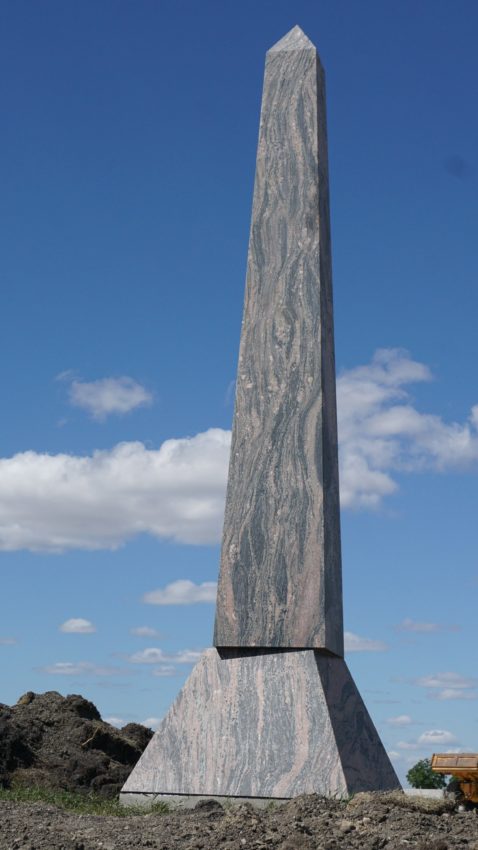
Pembina is located approximately two miles south of the Canadian border, and it has a population just under 600 inhabitants. It is also home to the artwork Monument to Monument, 1998 by artist Steven Woodward. The sculpture is a 14 foot stone obelisk made from solid blocks of rainbow granite. Rainbow granite features variegated pattern of pink, green, black, yellow, red, and brown.
Woodward explains in his artist statement about Monument to Monument, “the Obelisk is rotated off its base at a nine-degree angle. My intent by this gesture was to open up and activate the two forms. It obliquely refers to the monumenting process that occurred at the beginning twentieth century along the 49th parallel to define the boundary between the United States and Canada.”
In 2018, the artwork was first assessed by Conservator Pikus, and it was evident that some conservation treatment of the granite obelisk was necessary. Despite the harsh elements of North Dakota, the granite demonstrated little signs of weathering.
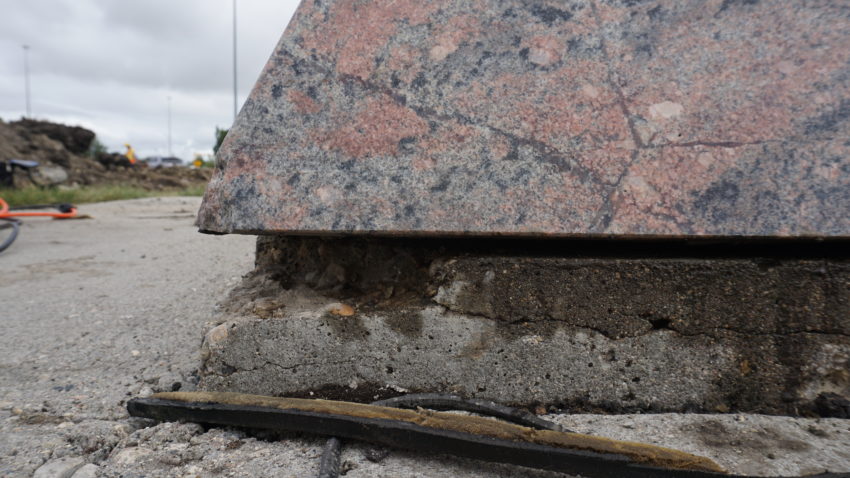
Condition issues were mostly related to physical damages which lead to chips in the stone. Previous repairs had also yellowed with age and became unsightly in appearance.
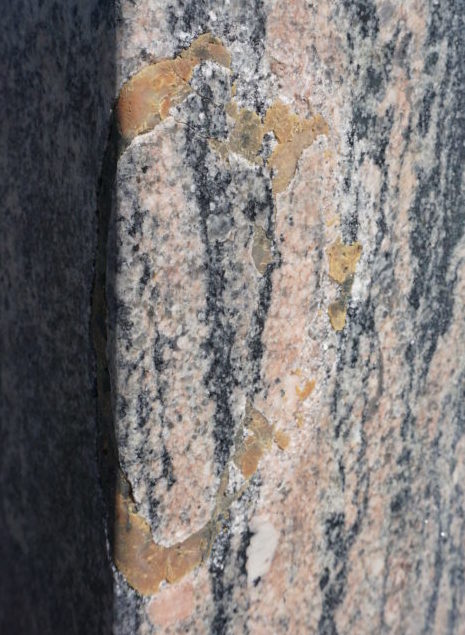
Joint material, or caulking, had reached the end of its service life demonstrating shrinkage and partial deterioration. This allowed for water to penetrate the sculpture. The concrete foundation was also in poor condition. There was an overall all layer of grime and dirt.
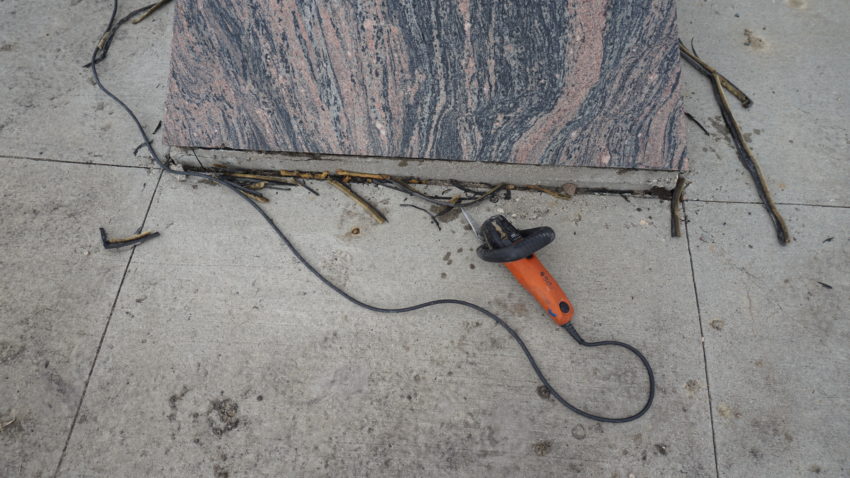
Conservation treatment of the granite obelisk began with removal of the old failed sealant from the joints under the base of the obelisk and between the base and the shaft. Cracked and loose fragments of the concrete foundation beneath the base were also removed.
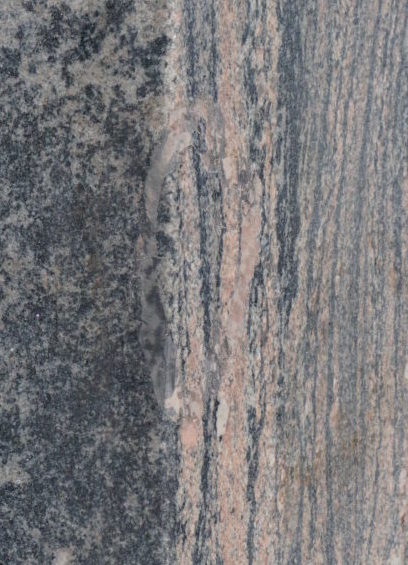
Dirt and grime were removed with a mild detergent and then rinsed thoroughly to clear any remaining residues. Losses were filled in both the sculpture and the concrete using conservation and industrial grade materials. Joins were resealed so that water no longer could infiltrate the sculpture, and the concrete foundation was repaired with a cementitious material.
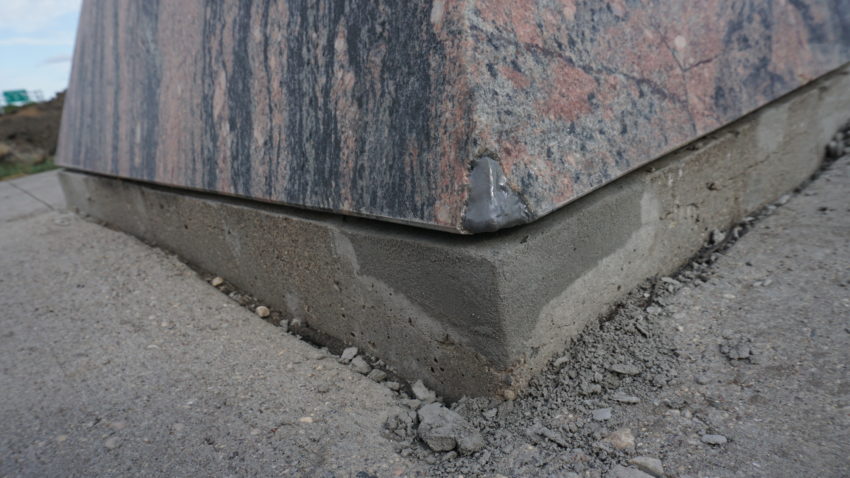
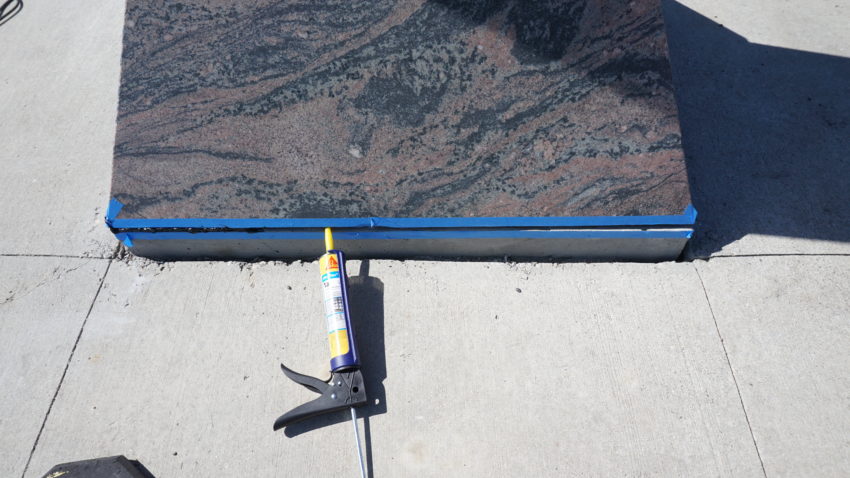
While the repairs for the conservation treatment of granite obelisk were minor, they were also necessary to keep the artwork in good condition and stable. Previous discolored fills have now been removed and replaced, new joins prevented water seeping into the stone, and the physical damages to the concrete base and sculpture were no longer visible at a normal viewing distance.
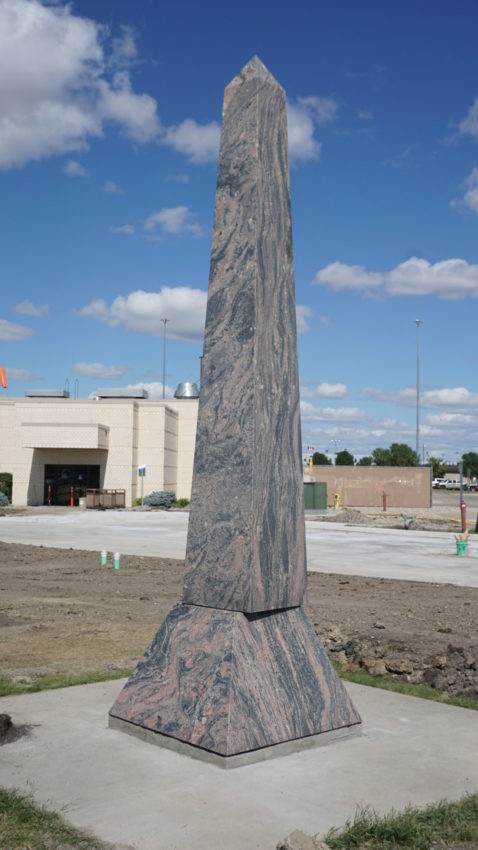
Though one can visit Monument to Monument located near the Pembina, North Dakota border station south of the Canadian border, the area is currently under construction. To learn more about the artist, visit Steven Woodward’s website.
